The era of the economy of impressions is near. Future technologies in everyday life
Everyone is probably interested to know how we will live in the future. For example, what will happen if water runs out in the world? What is to be done when the balance between man and the animal world is broken? How much space is there for growing crops? What are the rumors going around reducing the population of bees? And when will it be possible to drive a car not manually?
Such questions arise in a person for a reason. Digital technologies are beginning to show an intense impact on all spheres of human life. Today we will touch on the topic of clean water, affordable food and unmanned vehicles.
And so, let's order:
Many people know that our you and our drinking water is extracted from running water, groundwater and underground artesian springs. Every day we need a huge amount of water for personal consumption, which can not affect the water sources themselves. In addition, due to the growth of the world's population, even more water is required than it is now.
')
For this reason, the "used" water comes back to us after thorough cleaning. But in densely populated cities such purification structures require space, money and special care. This raises the question of finding a more profitable and economical way to get clean water.
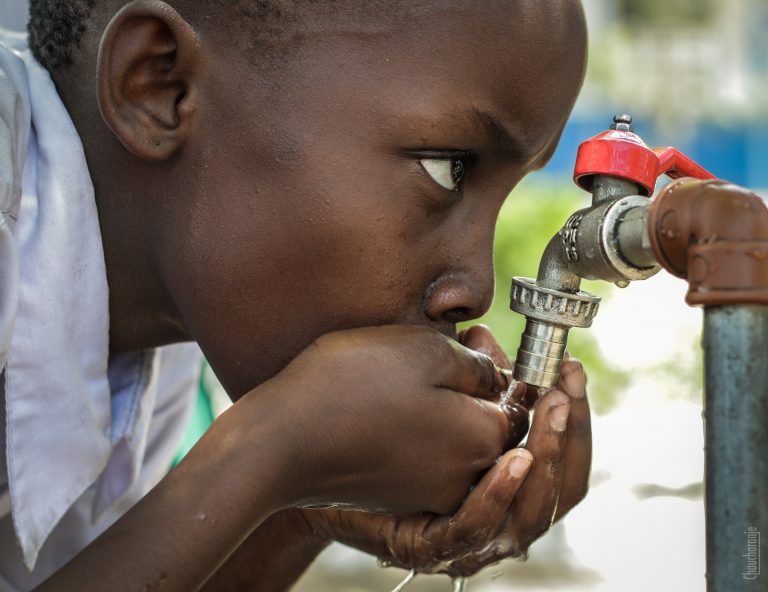
Craig Kridle and Bill Mitchch, environmental engineers from Stanford, claim that they are already addressing this issue and are looking for sustainable ways to treat wastewater. They came to the conclusion that it is worth re-using anaerobic processing - according to the principle of operation it is similar to the production of biogas.
At the moment, such an enterprise is already under construction in California. This is a joint project of several municipalities who see in this project a positive result and a huge benefit in the future.
Nanoprocessing
There is another technology that is only at the beginning of development, but has great potential in the future - this is a filtering system using nanoparticles. The Indian Institute of Technology at Madras is developing a low-cost and pollution-oriented biological filtration method. This method will kill germs and remove deadly contaminants such as lead and arsenic. This technology uses cheap materials (one of which is crustacean shell chitin) and uses a small amount of energy. There is a possibility that in the future we will see it in action in large-scale production.
Water is everywhere, but can you drink it?
You all know that a two-thirds planet is covered with water, but it is not possible to use it all. We are talking about ocean water where there is a high concentration of salt. Scientists have long been interested in the method of processing salt solution for human consumption.
Already there is a simple method of boiling ocean water in which the deadly salt is removed, but in the long run this method is very bulky, expensive and energy-intensive.
In recent developments, a special graphene membrane-based filter is being designed that can remove sea salt. In the long run, this method can be revolutionary in resolving the issue of desalination of seawater into potable water.
But even if humankind finds a compromise with water, what about the territory for planting and running livestock? The solution to this question has already been found - skyscrapers, greenhouses!
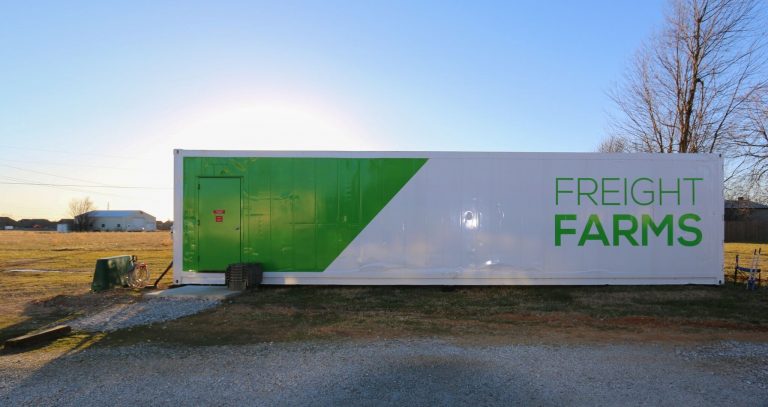
Have you already thought about the fact that you will not always eat cheese sandwiches and beef steaks?
Human pressure on the animal and plant world is becoming stronger every year due to population growth. Only here the growth of populations does not keep pace with the birth rate of new people. For this reason, the question of how to approach this question in order to please everyone is ripe.
Scientists have found that the discovery of new effective foods can help circumvent the road leading to hunger. They concluded that only radical changes could lead humanity to the food revolution.
Modified seeds show “need for speed”
As you know, the climate changes every year, sometimes not for the better for plants in different regions. This explains that only sustainable crops can become the key to a well-fed future. With the acceleration of the cycle of growth and reproduction of crops, scientists and breeders will be able to create plants that will be more nutritious, resistant to climate and disease.
NASA has already introduced the concept of “rapid selection,” in which artificially optimized lighting, food, and water supply will help accelerate plant growth. “Long day” crops: wheat, barley and chickpea are exposed to continuous LED light for 22 hours a day.
This method will allow breeders to increase the growth of generations per year up to six times. In addition, such methods contribute to the study and modernization of crops.
Skyscrapers, greenhouses
Based on the above experience in working with cereals, the question arises about the area of planting, which is required in large quantities. And an interesting solution has been devised for this problem.
Scientists decided that the farm should not grow in breadth, but upwards. This will help to save a large amount of territory for other needs of mankind. The founders of plantagon skyscrapers-greenhouses want to combine vertical farming with residential or business spaces in symbiosis with the municipal infrastructure (cooling, heating, biogas and water).
In plantagons, a production line is even designed, when certain cultures rotate around the room, they can be moved to the upper and lower floors to double the growth. This method will help prepare the crop for a specific date.
On the financial side, such farming activities in urban areas will help speed up the path of plants from the place of production to the consumer’s table. Also, renting free premises in such skyscrapers will help farmers manage their business more efficiently.
Farm inside cargo container
This is a similar option with skyscrapers, greenhouses, only in a more capacious format. Freight Farms provides a mobile personal farm service that uses hydroponics and automated climate control to grow fresh produce 24/7 at any time of the year. Approximate yield is 1000 heads of lettuce per week. This is enough to run your own business.
And yes, Freight Farms is a SOLIDWORKS client. Thanks to our software, the Green Machine was developed and designed. The company's team was able to move from the concept development stage to rapid prototyping and validation of the project. And it is worth noting that it was not necessary to create a single physical prototype. SOLIDWORKS has simplified the creation of production documentation and images of marketing materials.
Grow shrimp in your own garden
Each of you at least once in your life ate seafood, and someone eats them regularly. Many people know that aquaculture provides more than half of the seafood consumed by mankind. And you will be right, but still there is a need to grow them artificially. This is due to environmental difficulties.
Shrimp farming mainly occurs in tropical regions. Unfortunately, this process has led to the destruction of sensitive ecological systems of coastal areas. Also, because of the cultivation of shrimp and fish, one-fifth of the world's mangrove forests were destroyed.
Now imagine that you could grow shrimp anywhere in the world? With Biofloc technology, this will soon be possible. Such a technology will provide agriculture in artificial reservoirs, where microorganisms are used under full control of the microclimate to detoxify water and remove shrimp wastes. Also, these microorganisms are consumed by zooplankton, and it becomes shrimp food. In this connection, the need for shrimp is partially satisfied.

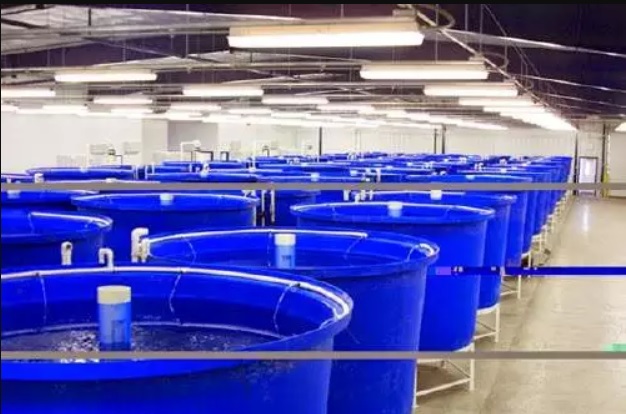
Biofloc Ponds in Japan (Photo: taniorganik.com)
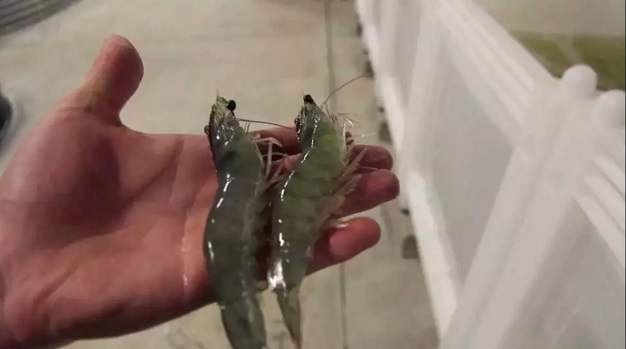
Cultured Shrimps (Photo: youtube.com)
Rural robots increase yields
The Institute for Robotics at Carnegie Mellon University is starting a project to use UAVs and autonomous robots. They will help farmers grow food faster and take on the main hard work.
The team has already developed an autonomous ground-based robot, which is able to conduct a visual inspection of the fields in order to predict the expected fruit harvest in the current season. Also, it can thin the fruit and cut the leaves to maintain the perfect balance between the volume of the foliage and the fruit.
Such a robot is a good representative of auxiliary robots, but development does not stop at them. There is one project that uses the analogue of living bees, the so-called “roboBee”. Have you heard of this?
Rumors of robot bees
Perhaps you have already heard that in recent years colonies of bees are beginning to die around the world. This is an extremely serious problem. Bees pollinate about a third of the crops, and if they become smaller, the number of strawberries, sunflower seeds, Brussels sprouts and many other crops will decrease significantly.
Several strategies are underway to rescue honey bees from total annihilation. Harvard University is working on insurance in the event of the death of bees. They develop the so-called robot bees. According to their structure, they will be microbes that have wings and sensors (similar to the antennas of real bees), which allow the "robopchel" to feel and react to the environment. Thanks to such functions, they will be able to pollinate crops for ten years.

An interesting fact is that the robot bee is an unmanned device, which with the help of analyzers will be oriented in the outside world. The same thing is happening now in the development of cars without a driver. Let's consecrate this topic in more detail.
Now we will touch on the topic of digital technologies in transport management. At the moment, any manufactured car is a storehouse of opportunities. Think of special parking assistants, a collision avoidance system, GPS, and other useful features. Now you can start the car using the application on the phone, use wireless headsets and connect your smartphone to control the periphery of the car.
But the question remains. When can a car move without a driver?

Where we go, we don't need drivers
Automated cars that use their own network and process data streams in milliseconds? Able to provide a safe train from point A to point B without a driver? It all sounds like a fantasy. But in reality this is not the case, just imagine that GPS is the child’s first step in overcoming obstacles and everything will fall into place.
Currently, the British engineering company RDM group (RDM group) is conducting tests of a number of low-speed autonomous transport system (L-SATS) vehicles. These vehicles look like small streamlined gondolas that move at low speed and move people or loads.
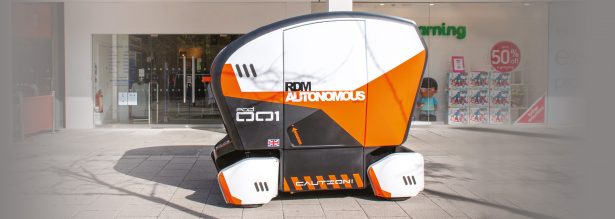
These driverless nacelles adapt to the environment thanks to a network of lasers that are located at specific points in the vehicle's chassis. On-board computers carry out calculations in order to navigate in the surrounding space, within a millisecond.
The RDM group used SOLIDWORKS 3D to work through ideas, control the design stages and simulate how her creations will move and behave in the real world.
But all this will be a dream until the infrastructure of the city is sufficiently developed where such cars can connect. This will help the system "Smart City".
"Smart City"
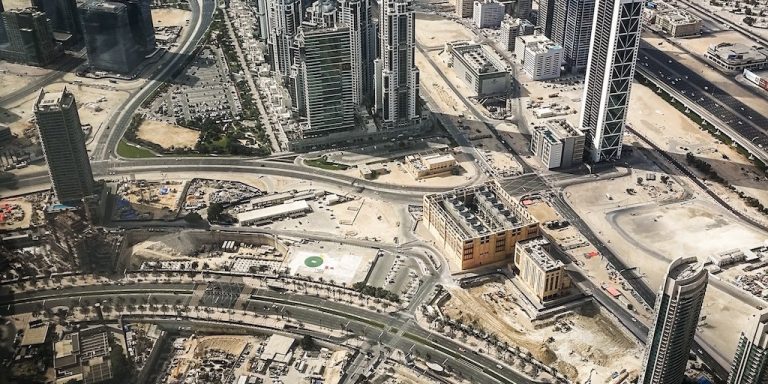
The Smart Cities Council is a global initiative that aims to help promote a rational living space that uses the full power of digital technology.
The Smart Cities Council takes into account synergistic systems that will help create an automated transport network. Such a network will be able to instantly focus on any interference and difficulties in the city, help to choose the optimal path and route the movement of autonomous machines without a driver. Under this system, each unmanned vehicle will transmit the latest data to the infrastructure and vice versa.
And these are not myths from the future. Already started investment in the production of such cars. Toyota and Microsoft are driving advanced driving technologies that are based on data analysis and mobile software. Ford, Audi and Mercedes are also paving their own way in developing a similar niche.

As you have already noticed, the development of digital technologies now directly affects our entire life. Smart bees, cars without a driver, water for everyone and always, food from a petri dish is all not a fairy tale and not fantastic stories. Research in such areas is no longer on paper, but entirely in the digital space, when the development can be tested without resorting to the creation of a physical prototype.
The tandem of water, food and transport for a person becomes quite strong and powerful. These three key links are the launching pad for the development of larger and smaller research in other areas. We focused on them because this is our future, in which such systems are necessary for comfortable living and securing living space on the planet.
Subscribe to Dassault Systèmes news and always be aware of innovations and modern technological solutions.
Dassault Systèmes official page: www.3ds.com/ru
Dassault Systèmes in social networks:
Facebook: www.facebook.com/DassaultSystemesRussia
Vkontakte: vk.com/3dsrussia
Linkedin: www.linkedin.com/company/dassaultsystemes
3DS Blog WordPress: blogs.3ds.com/russia
3DS Blog Render: render.ru/ru/3DS
3DS Blog Habr: habr.com/company/ds
Such questions arise in a person for a reason. Digital technologies are beginning to show an intense impact on all spheres of human life. Today we will touch on the topic of clean water, affordable food and unmanned vehicles.
And so, let's order:
New wave of water treatment
Many people know that our you and our drinking water is extracted from running water, groundwater and underground artesian springs. Every day we need a huge amount of water for personal consumption, which can not affect the water sources themselves. In addition, due to the growth of the world's population, even more water is required than it is now.
')
For this reason, the "used" water comes back to us after thorough cleaning. But in densely populated cities such purification structures require space, money and special care. This raises the question of finding a more profitable and economical way to get clean water.

Craig Kridle and Bill Mitchch, environmental engineers from Stanford, claim that they are already addressing this issue and are looking for sustainable ways to treat wastewater. They came to the conclusion that it is worth re-using anaerobic processing - according to the principle of operation it is similar to the production of biogas.
At the moment, such an enterprise is already under construction in California. This is a joint project of several municipalities who see in this project a positive result and a huge benefit in the future.
Nanoprocessing
There is another technology that is only at the beginning of development, but has great potential in the future - this is a filtering system using nanoparticles. The Indian Institute of Technology at Madras is developing a low-cost and pollution-oriented biological filtration method. This method will kill germs and remove deadly contaminants such as lead and arsenic. This technology uses cheap materials (one of which is crustacean shell chitin) and uses a small amount of energy. There is a possibility that in the future we will see it in action in large-scale production.
Water is everywhere, but can you drink it?
You all know that a two-thirds planet is covered with water, but it is not possible to use it all. We are talking about ocean water where there is a high concentration of salt. Scientists have long been interested in the method of processing salt solution for human consumption.
Already there is a simple method of boiling ocean water in which the deadly salt is removed, but in the long run this method is very bulky, expensive and energy-intensive.
In recent developments, a special graphene membrane-based filter is being designed that can remove sea salt. In the long run, this method can be revolutionary in resolving the issue of desalination of seawater into potable water.
But even if humankind finds a compromise with water, what about the territory for planting and running livestock? The solution to this question has already been found - skyscrapers, greenhouses!
Skyscrapers, greenhouses and robot bees: is this the future of food?

Have you already thought about the fact that you will not always eat cheese sandwiches and beef steaks?
Human pressure on the animal and plant world is becoming stronger every year due to population growth. Only here the growth of populations does not keep pace with the birth rate of new people. For this reason, the question of how to approach this question in order to please everyone is ripe.
Scientists have found that the discovery of new effective foods can help circumvent the road leading to hunger. They concluded that only radical changes could lead humanity to the food revolution.
Modified seeds show “need for speed”
As you know, the climate changes every year, sometimes not for the better for plants in different regions. This explains that only sustainable crops can become the key to a well-fed future. With the acceleration of the cycle of growth and reproduction of crops, scientists and breeders will be able to create plants that will be more nutritious, resistant to climate and disease.
NASA has already introduced the concept of “rapid selection,” in which artificially optimized lighting, food, and water supply will help accelerate plant growth. “Long day” crops: wheat, barley and chickpea are exposed to continuous LED light for 22 hours a day.
This method will allow breeders to increase the growth of generations per year up to six times. In addition, such methods contribute to the study and modernization of crops.
Skyscrapers, greenhouses
Based on the above experience in working with cereals, the question arises about the area of planting, which is required in large quantities. And an interesting solution has been devised for this problem.
Scientists decided that the farm should not grow in breadth, but upwards. This will help to save a large amount of territory for other needs of mankind. The founders of plantagon skyscrapers-greenhouses want to combine vertical farming with residential or business spaces in symbiosis with the municipal infrastructure (cooling, heating, biogas and water).
In plantagons, a production line is even designed, when certain cultures rotate around the room, they can be moved to the upper and lower floors to double the growth. This method will help prepare the crop for a specific date.
On the financial side, such farming activities in urban areas will help speed up the path of plants from the place of production to the consumer’s table. Also, renting free premises in such skyscrapers will help farmers manage their business more efficiently.
Farm inside cargo container
This is a similar option with skyscrapers, greenhouses, only in a more capacious format. Freight Farms provides a mobile personal farm service that uses hydroponics and automated climate control to grow fresh produce 24/7 at any time of the year. Approximate yield is 1000 heads of lettuce per week. This is enough to run your own business.
And yes, Freight Farms is a SOLIDWORKS client. Thanks to our software, the Green Machine was developed and designed. The company's team was able to move from the concept development stage to rapid prototyping and validation of the project. And it is worth noting that it was not necessary to create a single physical prototype. SOLIDWORKS has simplified the creation of production documentation and images of marketing materials.
Grow shrimp in your own garden
Each of you at least once in your life ate seafood, and someone eats them regularly. Many people know that aquaculture provides more than half of the seafood consumed by mankind. And you will be right, but still there is a need to grow them artificially. This is due to environmental difficulties.
Shrimp farming mainly occurs in tropical regions. Unfortunately, this process has led to the destruction of sensitive ecological systems of coastal areas. Also, because of the cultivation of shrimp and fish, one-fifth of the world's mangrove forests were destroyed.
Now imagine that you could grow shrimp anywhere in the world? With Biofloc technology, this will soon be possible. Such a technology will provide agriculture in artificial reservoirs, where microorganisms are used under full control of the microclimate to detoxify water and remove shrimp wastes. Also, these microorganisms are consumed by zooplankton, and it becomes shrimp food. In this connection, the need for shrimp is partially satisfied.


Biofloc Ponds in Japan (Photo: taniorganik.com)

Cultured Shrimps (Photo: youtube.com)
Rural robots increase yields
The Institute for Robotics at Carnegie Mellon University is starting a project to use UAVs and autonomous robots. They will help farmers grow food faster and take on the main hard work.
The team has already developed an autonomous ground-based robot, which is able to conduct a visual inspection of the fields in order to predict the expected fruit harvest in the current season. Also, it can thin the fruit and cut the leaves to maintain the perfect balance between the volume of the foliage and the fruit.
Such a robot is a good representative of auxiliary robots, but development does not stop at them. There is one project that uses the analogue of living bees, the so-called “roboBee”. Have you heard of this?
Rumors of robot bees
Perhaps you have already heard that in recent years colonies of bees are beginning to die around the world. This is an extremely serious problem. Bees pollinate about a third of the crops, and if they become smaller, the number of strawberries, sunflower seeds, Brussels sprouts and many other crops will decrease significantly.
Several strategies are underway to rescue honey bees from total annihilation. Harvard University is working on insurance in the event of the death of bees. They develop the so-called robot bees. According to their structure, they will be microbes that have wings and sensors (similar to the antennas of real bees), which allow the "robopchel" to feel and react to the environment. Thanks to such functions, they will be able to pollinate crops for ten years.

An interesting fact is that the robot bee is an unmanned device, which with the help of analyzers will be oriented in the outside world. The same thing is happening now in the development of cars without a driver. Let's consecrate this topic in more detail.
High technology on the highway
Now we will touch on the topic of digital technologies in transport management. At the moment, any manufactured car is a storehouse of opportunities. Think of special parking assistants, a collision avoidance system, GPS, and other useful features. Now you can start the car using the application on the phone, use wireless headsets and connect your smartphone to control the periphery of the car.
But the question remains. When can a car move without a driver?

Where we go, we don't need drivers
Automated cars that use their own network and process data streams in milliseconds? Able to provide a safe train from point A to point B without a driver? It all sounds like a fantasy. But in reality this is not the case, just imagine that GPS is the child’s first step in overcoming obstacles and everything will fall into place.
Currently, the British engineering company RDM group (RDM group) is conducting tests of a number of low-speed autonomous transport system (L-SATS) vehicles. These vehicles look like small streamlined gondolas that move at low speed and move people or loads.

These driverless nacelles adapt to the environment thanks to a network of lasers that are located at specific points in the vehicle's chassis. On-board computers carry out calculations in order to navigate in the surrounding space, within a millisecond.
The RDM group used SOLIDWORKS 3D to work through ideas, control the design stages and simulate how her creations will move and behave in the real world.
But all this will be a dream until the infrastructure of the city is sufficiently developed where such cars can connect. This will help the system "Smart City".
"Smart City"

The Smart Cities Council is a global initiative that aims to help promote a rational living space that uses the full power of digital technology.
The Smart Cities Council takes into account synergistic systems that will help create an automated transport network. Such a network will be able to instantly focus on any interference and difficulties in the city, help to choose the optimal path and route the movement of autonomous machines without a driver. Under this system, each unmanned vehicle will transmit the latest data to the infrastructure and vice versa.
And these are not myths from the future. Already started investment in the production of such cars. Toyota and Microsoft are driving advanced driving technologies that are based on data analysis and mobile software. Ford, Audi and Mercedes are also paving their own way in developing a similar niche.

Conclusion
As you have already noticed, the development of digital technologies now directly affects our entire life. Smart bees, cars without a driver, water for everyone and always, food from a petri dish is all not a fairy tale and not fantastic stories. Research in such areas is no longer on paper, but entirely in the digital space, when the development can be tested without resorting to the creation of a physical prototype.
The tandem of water, food and transport for a person becomes quite strong and powerful. These three key links are the launching pad for the development of larger and smaller research in other areas. We focused on them because this is our future, in which such systems are necessary for comfortable living and securing living space on the planet.
Subscribe to Dassault Systèmes news and always be aware of innovations and modern technological solutions.
Dassault Systèmes official page: www.3ds.com/ru
Dassault Systèmes in social networks:
Facebook: www.facebook.com/DassaultSystemesRussia
Vkontakte: vk.com/3dsrussia
Linkedin: www.linkedin.com/company/dassaultsystemes
3DS Blog WordPress: blogs.3ds.com/russia
3DS Blog Render: render.ru/ru/3DS
3DS Blog Habr: habr.com/company/ds
Source: https://habr.com/ru/post/441914/
All Articles